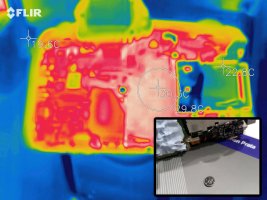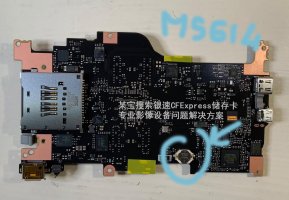It overheats in a refrigerator with an ambient temp of 4C and an internal temp of 30c... the cripple is real. I know... I own the R5.
Further more the actual cool down time is 2 minutes. Because there are no super insulated alien technology components in the R5. Just like pretty much everything else on earth... wait a couple of minutes and it cools down. Do you really buy it takes 2 hours for a chip that’s the size of a penny to cool down with no power running to it?
Ambient trapped air does not cool down in a sealed space that quickly in a sealed space. ambient will slowly rise with an increase of heat based sources, and it will slowly decrease the same and find equilibrium. the fact that you have a delta T of 26C is pretty significant actually especially if the camera mass at a chance to reach 4C. what you don't know is what the processor and card temperatures were at that time. The temperature sensor is not the processor, nor the sensor, but usually an IO interface for the RF communications with the lens. That was at least the initial specifications of that field in the EXIF.
Also the theory doesn't make much sense when the camera will record nearly indefinitely without cards which are a significant contributor to heat.
Nor does it explain for instance, the fact that the cooldown times go from 2 hours down to 25 minutes if you seriously cool the camera either. Why? becuase you are cooling the mass, which in turn cools down the ambient trapped air inside of the camera quicker, thus also cooling down everything else.
There is more to it than what you suggest but think what you may.
I have repeatedly stated there seems to be something fishy about the software. Most cameras don't attempt to predict your future record times,etc. and it seems like that it is based upon assumptions that may or may not fit in with all environmental factors. There's also this looming european rules going into effect for low temperature handling of equipment - but to be honest, this has been stated by people, but I could neither confirm or deny it's existance. But apparently it was supposed to go in 2021.
My point is, you can't say it's deliberate because you, in fact do not (and neither do I) have all the facts on the matter.
But if you go out looking for "deliberate crippling", you can find them in just about anything these days if you have the right confirmation bias.
Edit:
Roger from lensrentals weighed in on this as well.
Expert news, reviews and videos of the latest digital cameras, lenses, accessories, and phones. Get answers to your questions in our photography forums.

www.dpreview.com
I consider Roger a pretty trusted unbiased resource, unlike someone for instance who has an axe to grind, like Andrew.


